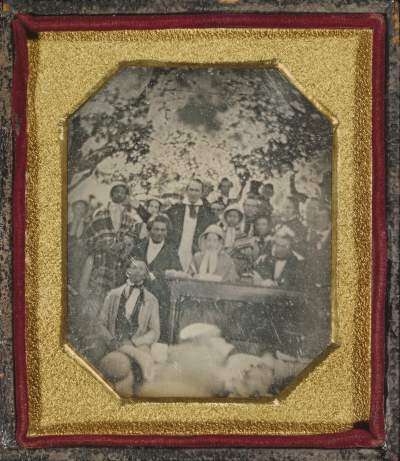If you look closely at this rare photograph, you can see Frederick Douglass. If you are interested in the history of the “Great Cazenovia Fugitive Slave Law Convention,” click here to learn more:
On August 21 and 22, 1850, in the orchard of Grace Wilson’s School, located on Sullivan Street in the village of Cazenovia, was held one of the largest and most important of the many abolition meetings. It was estimated that between 2000 and 3000 people came to the Cazenovia Convention, including “a considerable number of escaped slaves,” including famed orator Frederick Douglass and the Edmonson sisters. Leading abolitionists and rights activists of the time took the podium and spread their word calling for abolition of slavery.
In the crowd was Cazenovia’s daguerrean artist Ezra Greenleaf Weld, brother of Theodore Weld, one of the leading abolitionists. An image of the Cazenovia Convention, in the collections of the Madison County Historical Society, and captured by E.G. Weld, is among the most important images of early photography (a contemporary copy of the Weld image is in the Getty Museum.)
The roots of today’s carceral state can be found in part in laws like the Fugitive Slave act.


















